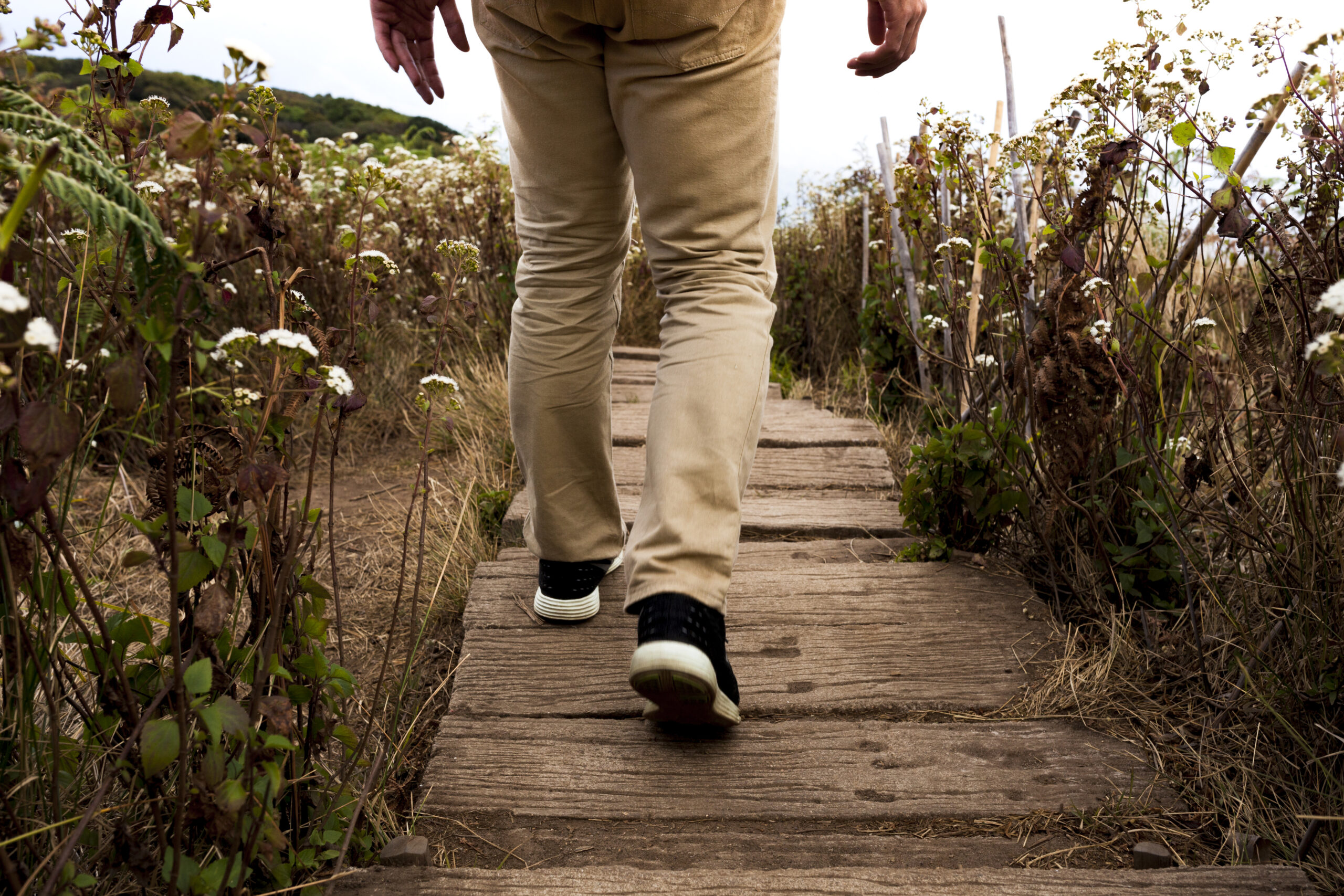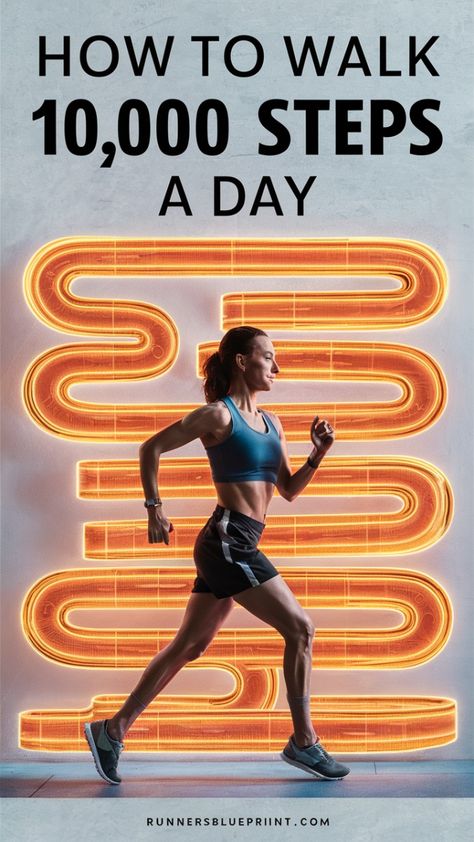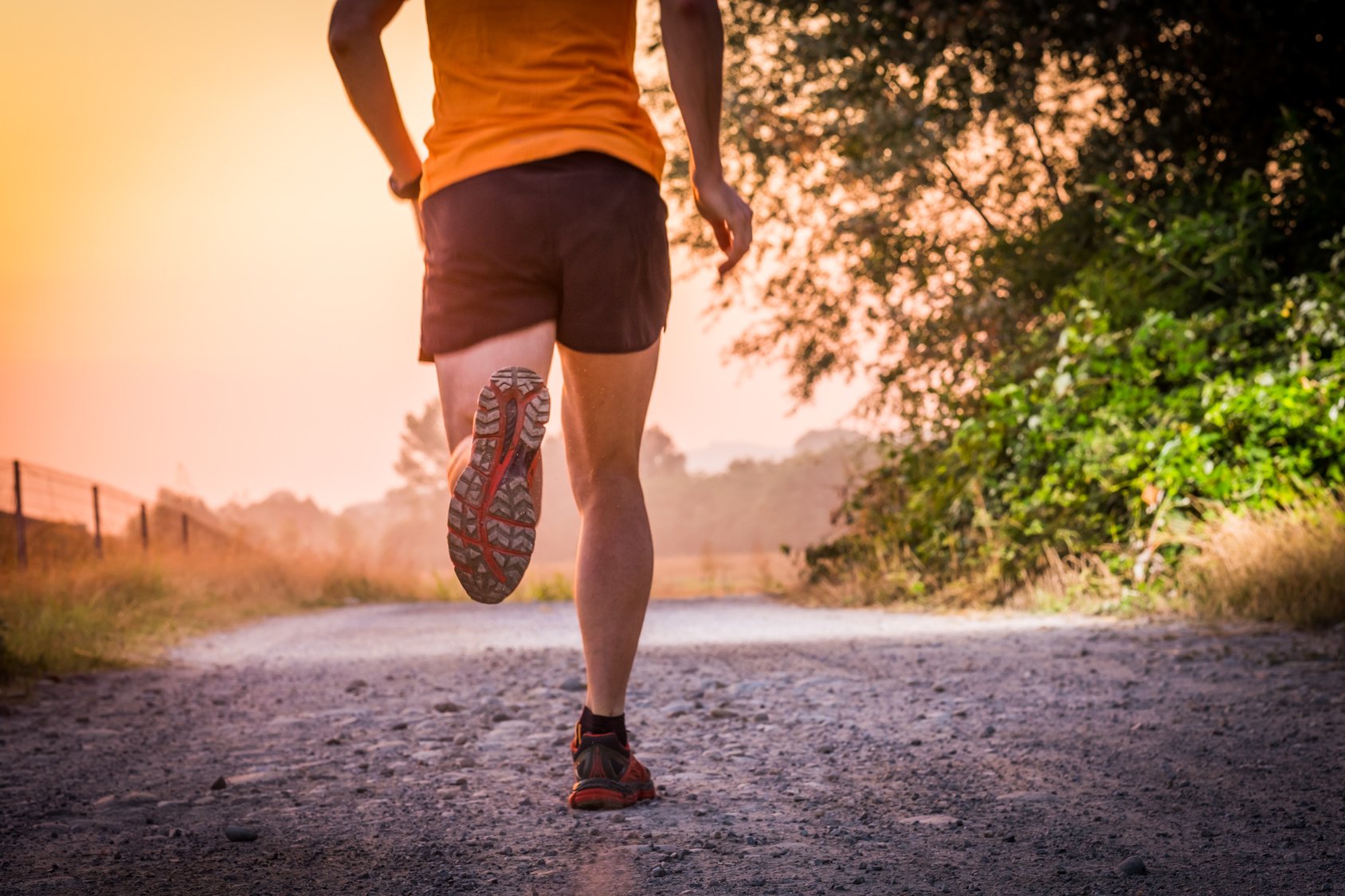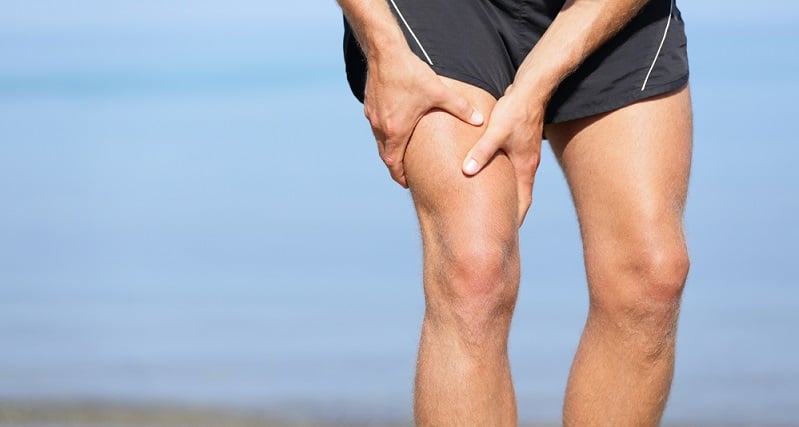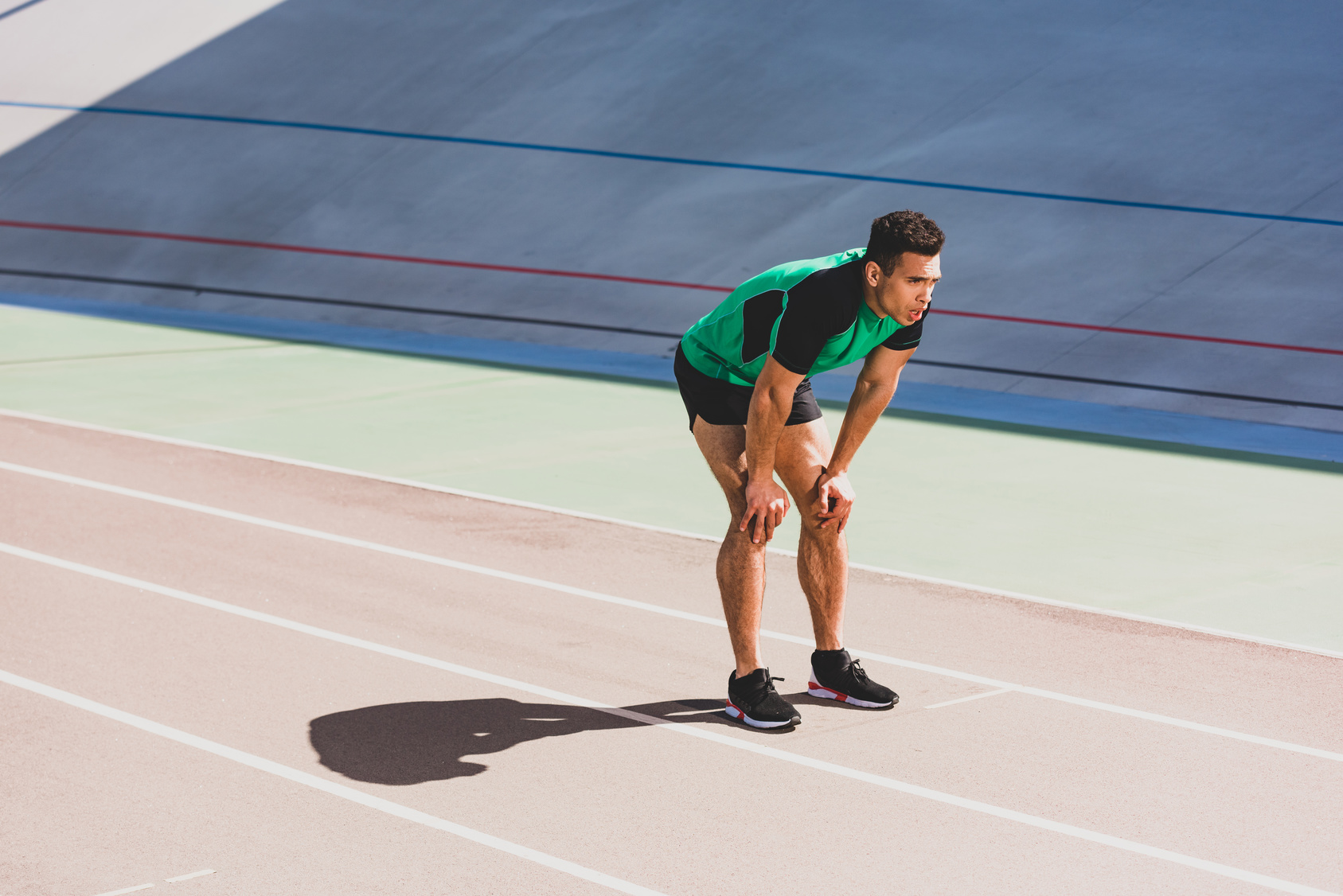It’s no secret that running with asthma can be tricky.
Many runners with asthma may experience wheezing, coughing, difficulty breathing, or chest tightness during and after running.
That’s why many asthmatic people try to avoid running.
But, in actuality, cardio workouts, like running, may help you improve breathing control and minimize the effects of asthma, research shows.
Today’s article will dive into the benefits and downsides of running with asthma and how to do it the right way.
More specifically, I’ll look into the following:
- What is asthma
- The benefits of running for people with asthma
- The challenges
- Can you run with asthma
- How to run safely with asthma
- And so much more
Sounds great?
Let’s get started.
Note – Just because you cough or have difficulty breathing while running doesn’t mean you have an asthma attack. A host of conditions can mimic asthma, such as vocal cord dysfunction or allergies. Consult your doctor for a full diagnosis. Also, get the green light from your doctor before you start running or make any drastic exercise change.
Exercise-Induced Asthma Explained
Asthma is a respiratory condition known for inflammation, swelling, and narrowing of the airways. Besides the increase in mucus release, these airway issues can cause difficulty breathing, wheezing, coughing, rapid respiration rate, and stubborn respiratory infections.
There are many types of asthma, but in runners (and active people in general), the most common one is what’s known as exercise-induced bronchoconstriction, or EIB for short. As the name implies, this condition is triggered by exercise—running is no exception.
EIB causes wheezing, shortness of breath, coughing, and other symptoms during or after exercise, triggered by narrowing airways.
What’s more?
It’s possible to be diagnosed with EIB without a diagnosis of asthma.
A survey shows that roughly 10 percent of people with asthma symptoms only during exercise don’t have a history of the condition.
What Happens When you Run With Asthma?
Since running is a form of cardiovascular exercise, logging the miles with asthma can be chilling. Any narrowing of the airways may restrict breathing, making it harder to deliver enough oxygen to your heart and work muscles.
Over 90 percent of people with asthma suffer from asthma symptoms during or after exercise. Even if you don’t have chronic asthma, you can still develop exercise-induced asthma. Surveys show that around 10 percent of asthma-free people may experience exercise-induced asthma.
If you have asthma, your body reacts by narrowing the airways, which is known as bronchoconstriction. This causes wheezing, tightness in the chest, and shortness of breath as your oxygen levels plummet. Over 90 percent of people with asthma suffer from exercise-induced bronchoconstriction.
This can be a frightening experience whether you’re dealing with exercise-induced asthma or it’s triggered by pollution.
What’s more?
Asthma symptoms can come and go, and specific triggers, such as cold air, smoke, dust, mold, and pet danders, can cause flare-ups (often out of nowhere). In addition, the ebb-and-flow nature of the conditions makes managing it a little more challenging.
What’s more?
Exercise-induced asthma is common among top athletes, including Olympic athletes and professional hockey players.
Factors that may increase the risk of exercise-induced asthma include:
- Dry air
- Cold air
- Air pollution
- Long-distance running
- Chlorine in swimming pools
Common Asthma Symptoms in Runners
Common symptoms of EIB may begin during or soon after running, lasting for an hour or longer if left untreated.
The symptoms may appear five to ten minutes after exercise ends and often go away within an hour of rest.
Some of these include:
- Wheezing
- Coughing
- Shortness of breath
- Fatigue during running
- Tightness in the chest
- Mediocre athletic performance
Can You Run With Asthma?
Of course, you can – as long as you take the right measures since exercise generally may worsen asthma symptoms for some people.
Here’s the truth. Running DOES improve lung function, but it often doesn’t feel that way when you’re coming down with an asthma attack and/or when you first start.
Of course, running may not boost your lung capacity since your body size primarily determines it. But, according to research, logging the miles regularly can help your lungs perform better.
With proper care and medication, you can reach your full running potential. However, remember that you might need to take even more measures during winter since cold air can trigger asthma attacks (more on this later.
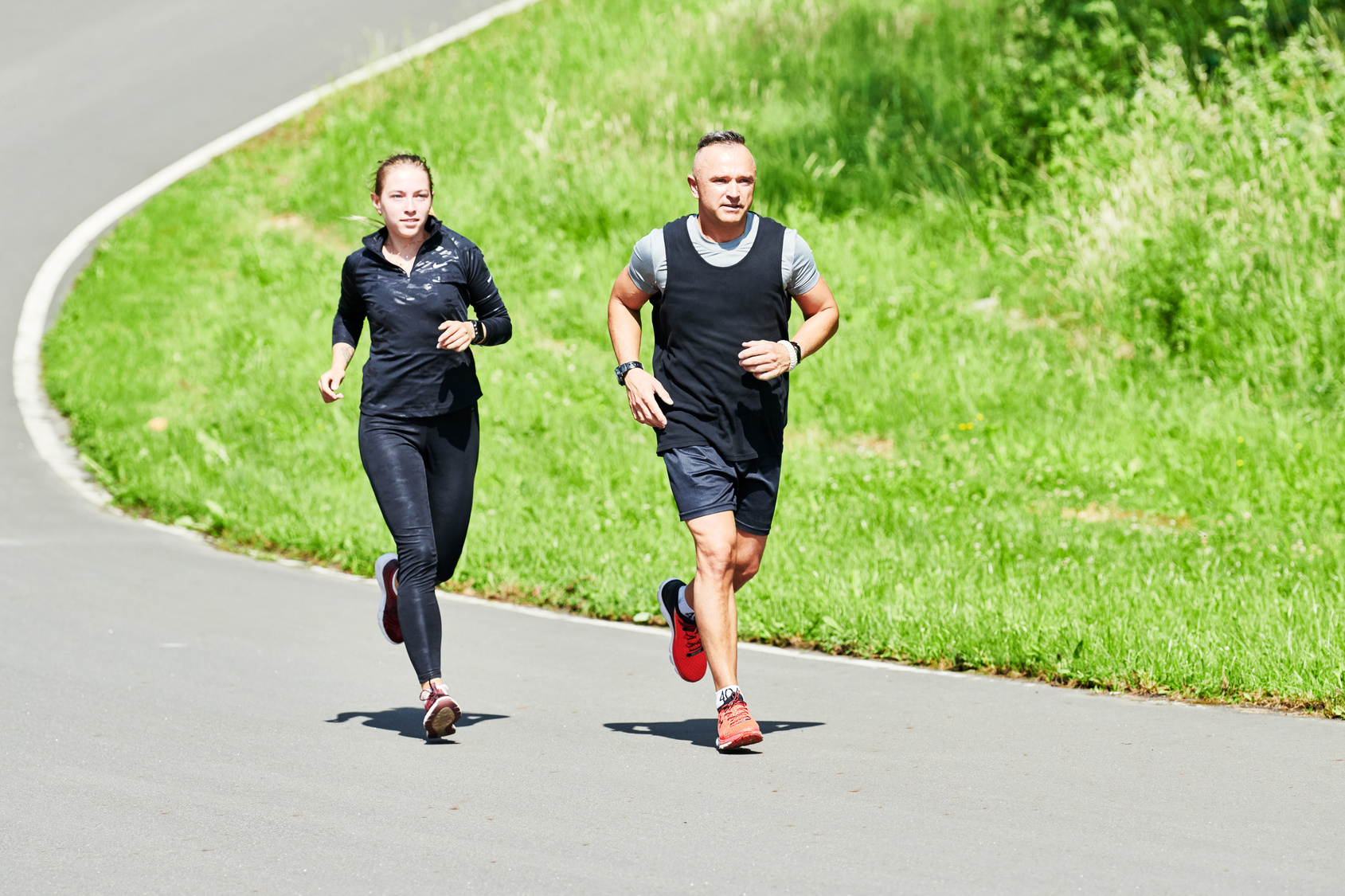
Can You Run a Marathon With Asthma?
And the answer is yes, of course, you can.
Don’t take my word for it. The legendary marathoner Paula Radcliff had asthma throughout her career.
And she’s not the exception. Surveys have shown that over 700 athletes that completed the 2012 London Olympics had confirmed asthma. Yet, the same athletes were twice as likely to gain a medal than their asthma-free rivals.
Again, don’t get me wrong, though. Training for a marathon while having asthma isn’t going to be easy. The more severe asthma you have, the harder it will be.
But don’t let that stand in the way of your marathon goals. Instead, approach it the same way you approach any other injury – Devise an action plan and learn how to stay consistent.
Is Running Good For Asthma?
Running with asthma can certainly has its cons, but there are a lot of benefits to gain if you choose to log the miles.
This may shock many people, but research found that running is good for people with asthma. The impact of running and exercise on asthma has been examined for a while and is widely recommended by health and medical experts.
In addition to the well-known benefits of running, such as improving endurance, increasing strength, losing weight, reducing stress, and building bone density, hitting the pavement can also help you manage asthma symptoms in the following ways:
Additional resource – Dealing with heart murmurs
Running Improve Asthma Control
Yes, that’s right. Running can be an ally when it comes to dealing with asthma.
Again, don’t take my word for it.
Research examining the effect of endurance running for five weeks on an adult with mild asthma reported that endurance running could boost the aerobic fitness of adults with asthma. The researchers also suggested that it also limits the severity of exercise-induced asthma.
Another review of 11 studies with over 500 subjects with asthma concluded that aerobic exercise, such as running, improved overall asthma control in most of the subjects. This improves asthma control and limits the rate and severity of asthma attacks.
Improved Lung Function
I hate to state the obvious, but weak lung function indicates asthma.
Here’s the good news. Research has found that sticking to a consistent exercise routine can improve lung function and slow down the age-related decline in lung function in asthmatic people.
For example, this study has demonstrated that high-intensity exercise improved lung function while slowing down the decline in adults with mild or moderate asthma.
Improved Oxygen Uptake
Running is a cardiovascular exercise per excellence. Hence it improves the oxygen delivery capacity of your lungs. Again, a study has found that improved oxygen capacity can make breathing much easier, especially when it comes to improving lung strength and function. As you can tell, this can lead to oxygen uptake increases.
The more efficient your oxygen uptake, the less effort it takes you to breathe.
Reduce Airway Inflammation
Airway inflammation is one of the main signs of asthma, resulting in wheezing, coughing, and shortness of breath. So anything that helps soothe inflammation in the airways can help reduce asthma symptoms, especially when they’re triggered by airway inflammation.
Guess what’s good for this? Of course, exercise.
Again, don’t take my word for it. Research has found that three-month aerobic exercise plans reduced airway inflammation markers in asthma patients.
How To Run With Asthma
If you’re serious about running regularly with asthma, paying attention to your satsuma is key. Then, you can take a few measures to ensure your training is safe and comfortable.
Without further ado, here are a few measures to help you make the most of your runs when you have asthma.
Have A Running With Asthma Action Plan
Failing to plan is planning to fail. This is a true statement whether you’re trying to make a 6-figure income or planning to run with asthma.
A good asthma action plan should include preventive measures to manage asthma symptoms and limit flare-ups. In most cases, it should contain more than a few strategies for running with asthma to feel more confident in your ability to train safely and comfortably.
When you create an effective asthma plan, you’ll have the strategies you need for running with asthma which will improve your confidence to have effective and safe training.
For the most effective plan, consult your doctor and know your options. For example, they might prescribe a daily inhaler to reduce risk by soothing airway irritation.
The plan should help you manage your EIB symptoms.
What’s more?
Your doctor might also suggest you take a rescue inhaler around 10 to 15 minutes before
Warm-up
I cannot emphasize the importance of proper warm-ups while running. This is especially the case if you’re running with asthma.
A good warm-up prevents injury and ensures good performance. It could also keep your asthma at bay by preparing your lungs for the hard work ahead. By easing into your runs, you’ll give your airways and lungs enough time to handle the hard work to come. Otherwise, you might risk a flare-up, and you don’t want that.
Always begin by jogging slowly for five minutes, then perform a set of dynamic stretches quickly and continuously.
Think lunges, inchworms leg swings, butt kicks, etc., then do a few short, hard pick-ups—or bursts of speed running at a controlled pace.
Carry Your Inhaler
Have your rescue inhaler with you while out running. And this is the case whether it’s something you tend to use often or not. The moment you start experiencing symptoms while running, use it right away. No more dilly dally.
Find The Right Time
If you’ve known asthma triggers, such as smog or pollen, figure out when to run outside.
Pollen is often higher in the early morning, whereas smog is usually problematic later in the day.
As a rule, avoid running or only go for a short run on days when pollen counts are elevated.
Check Pollen Counts
Is Pollen a trigger for you? Then make sure to be careful during the spring when the pollen count is high since pollen causes cause bronchial spasms and airway irritation that can lead to flare-ups.
I hate to sound like a broken record, but you always have the option of moving your runs indoors on days when the pollen count is high.
Know Your Limits
The key to avoiding asthma attacks while running is to start slowly and pay attention to how fast and far you can go.
Don’t push your body too far—or you’ll regret it later.
So how do you keep things under control?
Measure your training intensity using the talk test.
You’re likely okay if you can keep a conversation going while running.
If your breathing becomes restricted or you start to feel faint or dizzy, ease back and rest until your breathing is back to normal. I’d recommend that you rely on effort instead of pace or mileage to guide your runs.
Pay attention to your breathing and notice any signs of an asthma attack, such as flushed skin, faster breathing, excessive sweating, wheezing, coughing, or chest tightness.
If you feel any of these, slow down or stop and take your rescue inhaler. It’s always better to be safe than sorry.
Choose The Right Weather and Season
In general, it’s best run in humid and warm conditions.
Pay attention during spring and fall.
Some of you might have pollen or grass sensitivity that triggers asthma.
If you have to run outside in the cold, put on a scarf or facemask to cover your mouth and nose— this helps warm the air up before it reaches your lungs, preventing it from irritating your airways.
Or, jump on the treadmill—indoor running is less like to induce an asthma attack.
Check Air Quality
Pollution is a common cause of asthma symptoms.
I recommend using an app like AirNow.gov and checking the air quality before heading out for a run. Keep it short or very easy if it’s yellow. I recommend skipping your outdoor run and training indoors if the air quality is orange or red. It’s not worth it.
For the best air conditioning, I’d recommend running after it rains. You should also try running on trails to avoid pollution from cars and industrial zones.
Cover Your Face
As I hate stated earlier, even if you don’t have asthma, you might cough while running in cold temperatures. The reason is simple. Breathing in cold and dry air can irritate your airways, which is a trigger for bronchospasm.
For this reason, I’d recommend covering your mouth and nose while running, so the “warmed” air you exhale helps moisten the air you inhale. Avoid a bandana or face cover made from cotton, which can freeze in cold and wet conditions.
Your best options are a fleece balaclava or neck gaiters.
Take Your Meds
Take your allergy medication roughly 4 hours before running. Some research suggests that taking too close to running time may impair your breathing, and you don’t want that.
Asthma medication used before working out can control and mitigate exercise-induced asthma symptoms, especially short-acting beta-2 asthma medication, such as albuterol.
Even if you only use it once in a blue moon, it’s better to safe than sorry. Consult your doctor if you have persistent side effects from medication, such as palpitations or tremors, before you start logging miles.
Pay Attention to Your Body
If your lungs are acting up, slow down or stop running altogether.
You may experience wheezing, chest tightness, shortness of breath, or coughing.
Next, get your rescue inhaler and follow your asthma treatment plan.
Start running again once your symptoms subside by walking slowly or even walking.
Running through the symptoms only makes things worst.
When to See A Doctor
If you’re dealing with asthma, it’s key to consult your doctor before starting a running plan. They can work with you to make the right training and treatment plan. This helps that running is safe.
What’s more?
Remember that various health conditions may mimic asthma and cause similar symptoms, making getting a thorough and accurate diagnosis important.
Running with Asthma – The Conclusion
Ultimately having asthma shouldn’t stop you from pursuing your running goals and living a healthy lifestyle.
And, in some cases, running with asthma can help your symptoms
By taking the right asthma measures during and after your runs, you can safely and comfortably keep running and doing this sport to meet your training goals.
So lace up those running shoes and run with them.





